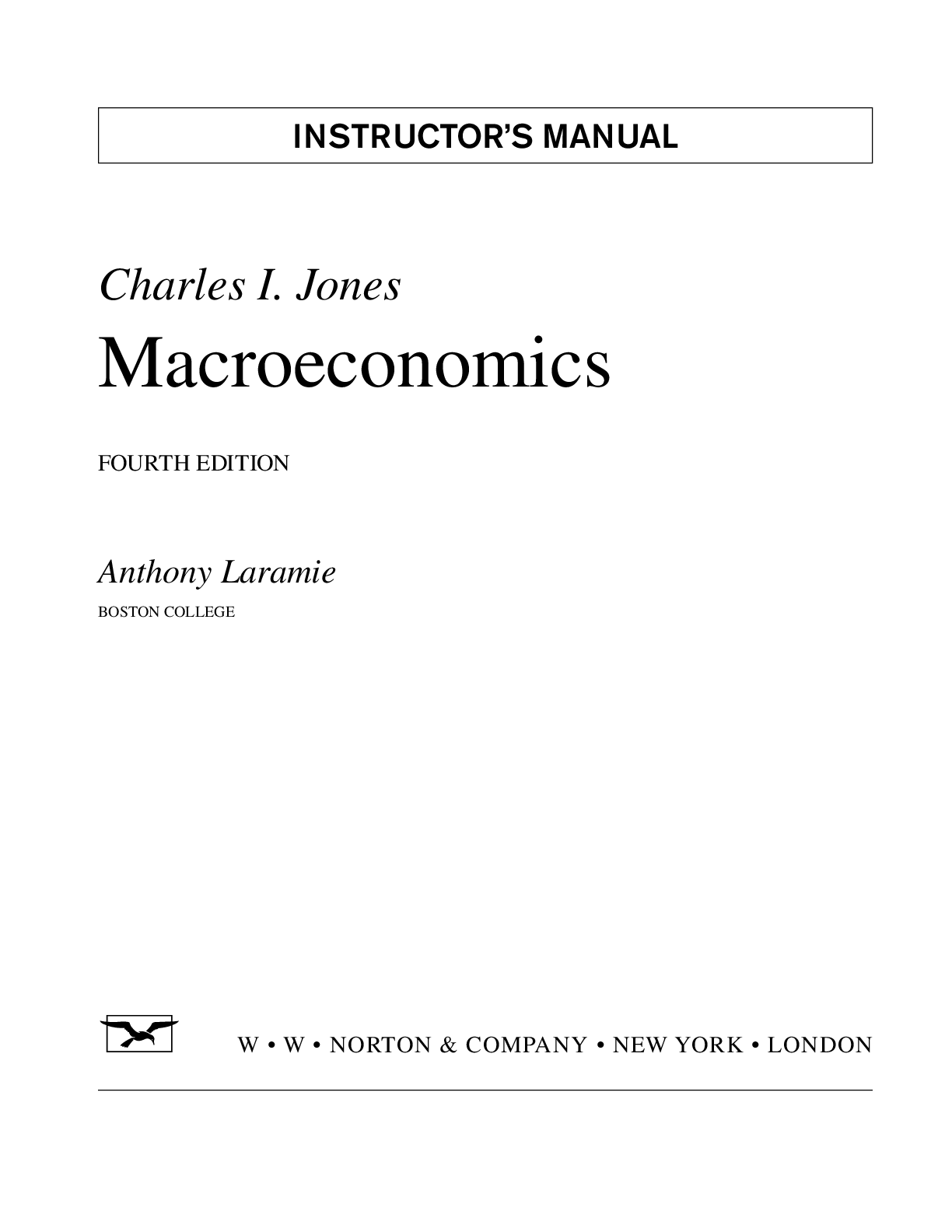CHAPTER OVERVIEW
This is a conventional first textbook chapter: it defines macro-
economics, it mentions a few interesting topics, it says what a
model is, and it lays out the book’s separation into Long
Run, Short Run, and Applications and Microfoundations. It
is quite a short chapter with few surprises, so rather than sum-
marizing it, I will instead talk a little about what makes this
book different and lay out a few dif ferent ways you can use
it in your course.
WHAT MAKES THIS BOOK DIFFERENT?
It offers solid long-run growth coverage—including endog-
enous growth—while simplifying the New Keynesian busi-
ness cycle dramatically, and it does all this without any
calculus. Chad shows how long-run macroeconomic growth
models have evolved and how tweaking the assumptions of
the model can lead to new and interesting insights and pol-
icy conclusions. Moreover, Chad easily deduces a short-run
model from the long-run model and therefore links short-run
and long-run economic analyses. By streamlining the cover-
age while teaching surprisingly solid microfoundations,
Chad’s text offers you a solid chance to spend more time on
intelligent, model-driven policy discussions about growth and
business cycles.
HOW TO USE THIS TEXTBOOK
CONVENTIONAL ONE-SEMESTER CLASS
In this day and age of assessment, we are ever conscious of
what we teach, how we teach it, who our students are, what
our students learn, and how they learn. Most students who
have recently had a principles course and who are comfort-
able with a little algebra should be able to handle Chap-
ters 1–14 in a semester. How much time you spend on these
chapters, whether you omit coverage of any of these chap-
ters, and the nature and skill level of your students will
influence your coverage of the later chapters.
Moreover, if you want to leave room for a few supplemen-
tary articles, a nontechnical book, or a major empirical proj-
ect or two, then you might have to tread lightly over some of
the math in the growth- and labor-market models, which are
self-contained and don’t directly come up again later in the
semester. Advice on how to do this is given in later chapters
of this manual.
This fourth edition of the book provides an innovative
chapter on dynamic stochastic general equilibrium (DSGE)
models. This chapter provides a bridge between long-run eco-
nomic growth and short-run economic fluctuations, and it
fi ts in nicely at the end of Part 3 of the textbook to remind us
of the links between the long run and the short run. I’d rec-
ommend that you make time in the semester to include Chap-
ter 15 as a capstone to a semester course.
ONE-QUARTER COURSE OR ONE-SEMESTER COURSE WITH
MANY OUTSIDE READINGS AND PROJECTS
Chapters 1–4 (Introduction through the basics of growth and
productivity), 8–11, 15 (inflation, business cycles, and DGSE
models), and two of the following: Chapters 5, 6.1–6.3, and
7; or 12–14 and 18–20.
TWO-QUARTER COURSE OR TWO-SEMESTER COURSE
The entire book— one quarter on long-run growth, labor mar-
kets, infl ation, consumption, and investment (Chapters 1–8,
Read More


